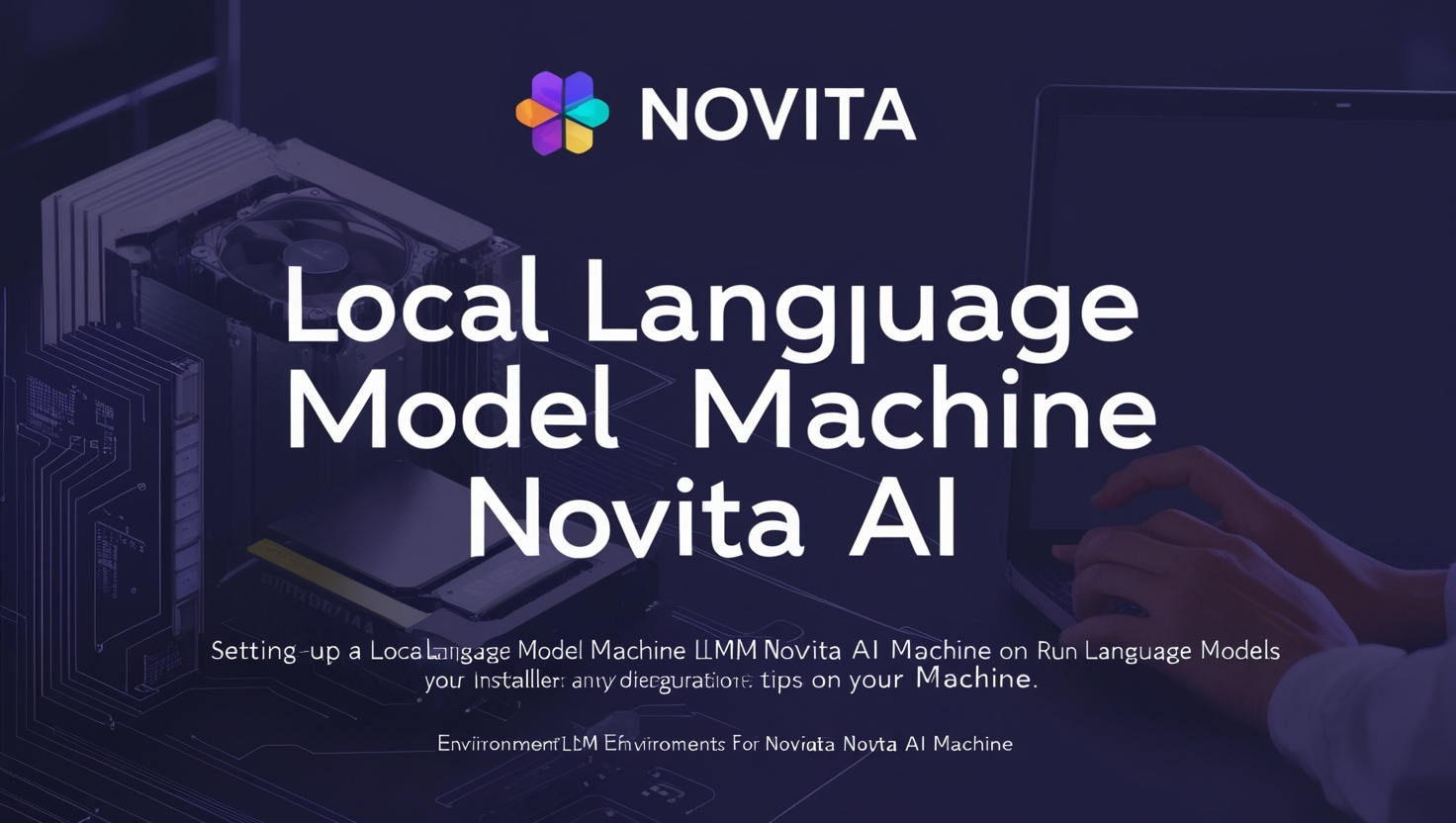Introduction
Setting up a Local Language Model Machine (LMM) for Novita AI can significantly enhance your AI-driven projects by allowing you to run advanced language models directly on your local machine. (How to Set Up a Local LMM Novita AI) This guide will walk you through setting up a local LMM Novita AI environment, covering hardware requirements, software dependencies, installation processes, and configuration tips.
Hardware Requirements
Before starting the installation process, it is crucial to ensure that your hardware meets the requirements for running a local LMM Novita AI. A powerful GPU with sufficient VRAM, preferably from NVIDIA, is essential for handling the intensive computations. (How to Set Up a Local LMM Novita AI)Additionally, having at least 16GB of RAM and ample storage space will help manage large datasets and models efficiently. These hardware components are the backbone of your setup, ensuring smooth and efficient operation.
Software Dependencies
Regarding software dependencies, you will typically need to install Python, Docker, and an API key. These requirements allow you to install and utilize the LLM models on the computer. Once you have the necessary hardware and software, you can select the right LLM. Python is the primary programming language, while Docker provides a containerized environment to manage dependencies seamlessly.
Installing Python
The first step in setting up a local LMM Novita AI is to install Python. Python 3.8 or higher is recommended for compatibility with most AI libraries and frameworks. You may obtain the most recent version of Python from the official site then adhere to the directions for setting it up on the operating system you are using. After installation, ensure that Python is added to your system’s PATH to enable easy access from the command line.
Setting Up Docker
Next, you need to install Docker. Docker allows you to create, deploy, and run applications in containers, encapsulating all the dependencies required for your AI models. Visit the Docker website, download the Docker Desktop application, and follow the installation guide for your operating system. Once installed, you can verify the installation by running the Docker version on your terminal.
Acquiring an API Key
An API key is essential for accessing Novita AI’s services. You can obtain an API key by registering on the Novita AI website and subscribing to a plan that suits your needs. Once you have the API key, store it securely, as needed during the configuration process. The API key allows your local setup to communicate with Novita AI’s servers, enabling seamless integration.
Downloading LLM Models
With the hardware and software in place, the next step is downloading the appropriate LLM models for Novita AI. These models can be accessed from Novita AI’s repository or other trusted sources. Ensure that you download models that are compatible with your hardware specifications. After downloading, unpack the contents to a folder on your own computer.
Setting Up a Virtual Environment
Creating a virtual environment in Python helps manage dependencies and avoid conflicts between different projects. You can create a virtual environment by running Python -m venv novita_env in your terminal. Activate the environment by running source novita_env/bin/activate on Linux or macOS or novita_env\Scripts\activate on Windows. This step ensures that all dependencies are installed within the virtual environment.
Installing Required Libraries
Run pip install -r requirements.txt to install all dependencies listed in the requirements file. This file should include libraries like TensorFlow, PyTorch, and other essential packages for running Novita AI models. Installing these libraries within the virtual environment ensures a clean and manageable setup.
Configuring the Environment
Configuration involves setting up environment variables and adjusting settings to optimize performance. Create a .env file in your project directory and add your API key and configuration parameters. Adjust the batch size, learning rate, and model paths to your hardware capabilities and project requirements. Proper configuration is vital to optimal local LMM Novita AI setup performance.
Running the LLM Model
Once everything is set up, you can run the LLM model by executing the main script in your project directory. This script should initialize the model, load the necessary data, and start the inference or training process. Monitor the output for any errors and adjust the configuration as needed. Running the model locally allows for greater control and flexibility in your AI projects.
Troubleshooting Common Issues
Setting up a local LMM Novita AI can sometimes encounter compatibility errors, insufficient memory, or configuration problems. Common troubleshooting steps include updating drivers, adjusting configuration settings, and consulting documentation for solutions. Keeping your software and drivers up to date can help mitigate many of these issues.
Optimizing Performance
Optimizing performance involves fine-tuning the model parameters and leveraging hardware acceleration. Techniques like mixed-precision training, model pruning, and optimized libraries can significantly enhance performance. Regularly monitoring resource usage and making adjustments can help in maintaining efficient operation.
Securing Your Setup
Security is an essential aspect of setting up a local LMM Novita AI. Ensure that your API key and other sensitive information are stored securely. Use encryption and access control mechanisms to protect your data and models. Regularly update your software and apply security patches to mitigate potential vulnerabilities.
Backing Up Your Data
Regular backups are essential to prevent data loss. Implement a backup strategy that includes periodic snapshots of your models, datasets, and configuration files. safely save backups in cloud-based storage or external disks.. A reliable backup can save significant time and effort in case of a system failure.
Conclusion
Setting up a local LMM Novita AI involves careful planning and execution. Each step is crucial for a successful setup, From ensuring hardware requirements to installing software dependencies, configuring the environment, and running the models. Following this guide, you can create a robust local LMM Novita AI setup that empowers you to develop advanced AI applications. Regular maintenance, optimization, and collaboration further enhance the capabilities of your setup, enabling you to achieve your AI project goals effectively.







